[caption id=“attachment_7238941” align=“alignnone” width=“1280”] The Spitzer space telescope captured this infrared image of the Messier 81 galaxy that is located in the Ursa Major constellation. The image shows lanes of dust where there is active star formation. Image credit: NASA/JPL[/caption] [caption id=“attachment_7239051” align=“alignnone” width=“1000”]
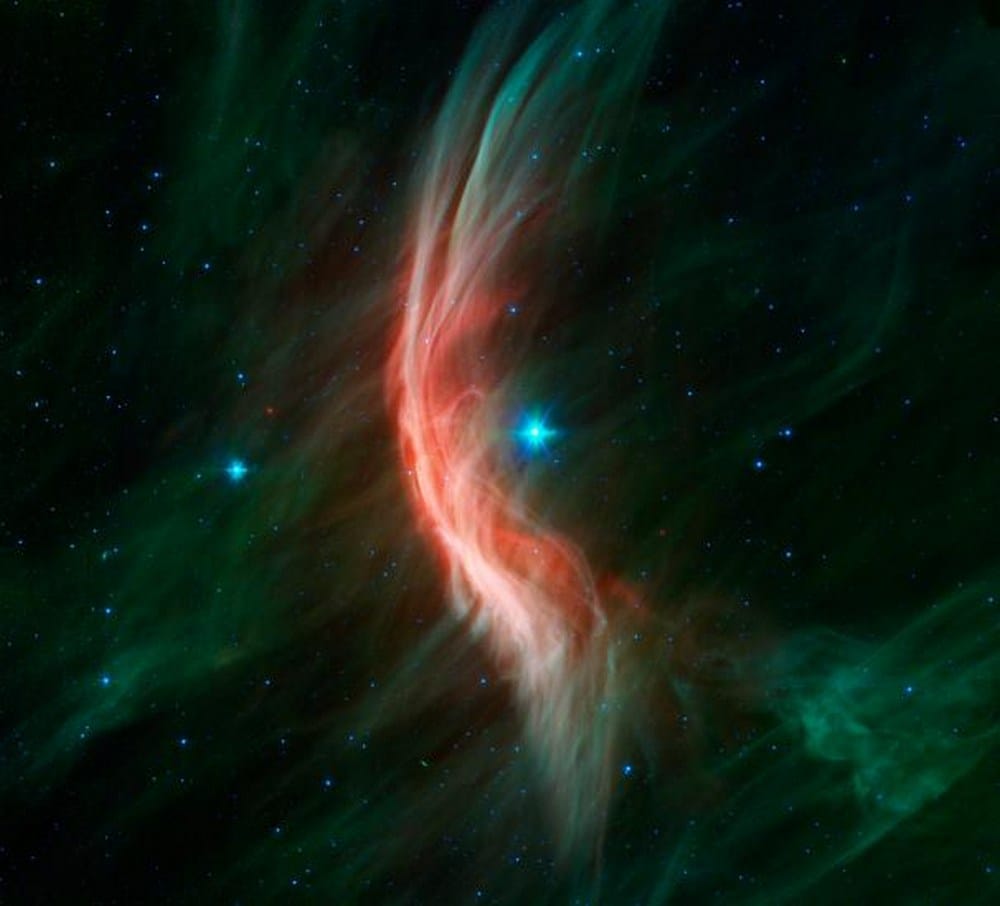 The Spitzer space telescope shows the giant star Zeta Ophiuchi and the bow shock or shock wave in front of it. The bow is only visible in infrared light and is created by winds that flow from the star making ripples in the surrounding dust. Image credit: NASA/JPL[/caption] [caption id=“attachment_7238871” align=“alignnone” width=“1280”]
The Spitzer space telescope shows the giant star Zeta Ophiuchi and the bow shock or shock wave in front of it. The bow is only visible in infrared light and is created by winds that flow from the star making ripples in the surrounding dust. Image credit: NASA/JPL[/caption] [caption id=“attachment_7238871” align=“alignnone” width=“1280”] This is the Messier 104 or Sombrero galaxy and the Spritzer telescope was the first one to reveal the smooth, bright ring of dust (in red) circling the galaxy. The disk is also warped which is usually the result of a gravitational encounter with another galaxy. Image credit: NASA/JPL[/caption] [caption id=“attachment_7238851” align=“alignnone” width=“1000”]
This is the Messier 104 or Sombrero galaxy and the Spritzer telescope was the first one to reveal the smooth, bright ring of dust (in red) circling the galaxy. The disk is also warped which is usually the result of a gravitational encounter with another galaxy. Image credit: NASA/JPL[/caption] [caption id=“attachment_7238851” align=“alignnone” width=“1000”]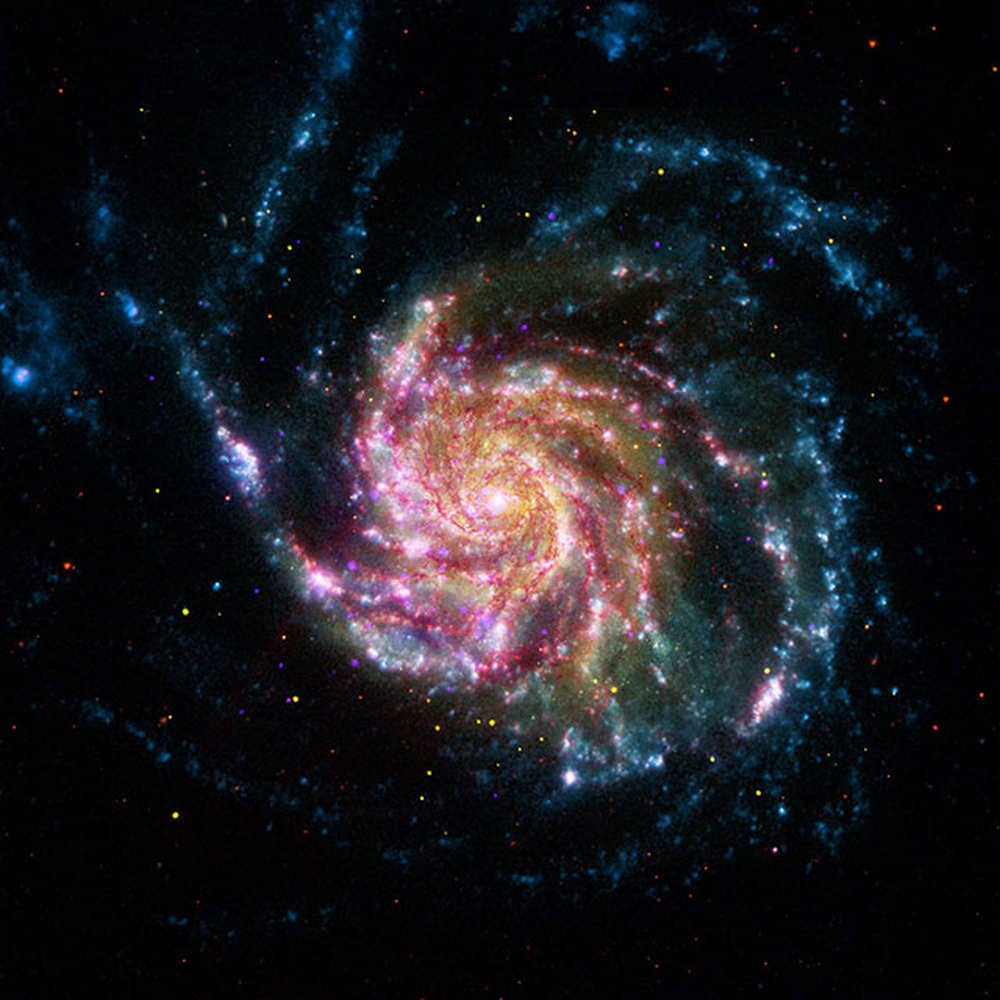 This an image of the pinwheel galaxy or messier 101 which has combined data from four different telescopes including the Spritzer telescope. This galaxy is 70 percent larger than our Milky Way and is 21 million light-years away from the Earth. Image credit: NASA/JPL[/caption] [caption id=“attachment_7238861” align=“alignnone” width=“1000”]
This an image of the pinwheel galaxy or messier 101 which has combined data from four different telescopes including the Spritzer telescope. This galaxy is 70 percent larger than our Milky Way and is 21 million light-years away from the Earth. Image credit: NASA/JPL[/caption] [caption id=“attachment_7238861” align=“alignnone” width=“1000”]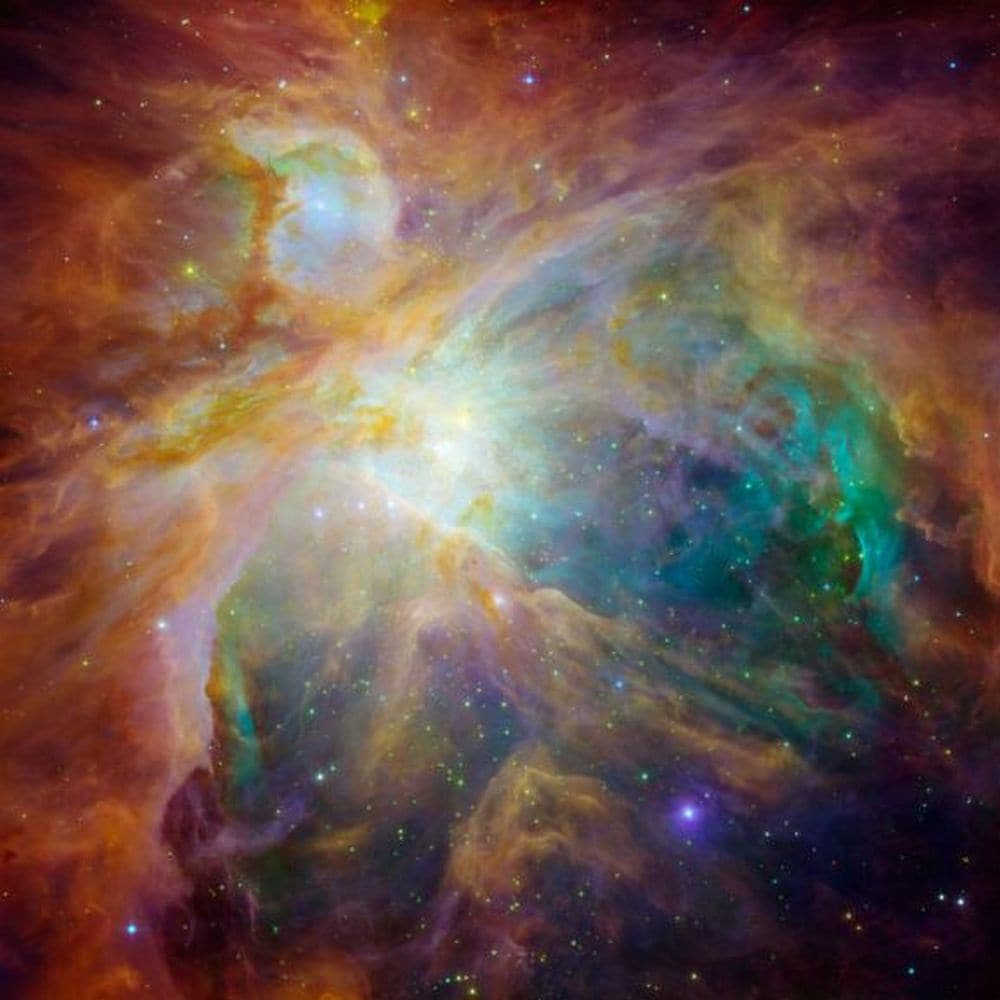 The Orion nebula, the brightest spot in the sword of the Orion constellation. This image is a combination of data from the Spritzer and Hubble telescopes. In the centre of the image are four massive stars that are collectively called the Trapezium. Image credit: NASA/JPL[/caption] [caption id=“attachment_7238841” align=“alignnone” width=“1280”]
The Orion nebula, the brightest spot in the sword of the Orion constellation. This image is a combination of data from the Spritzer and Hubble telescopes. In the centre of the image are four massive stars that are collectively called the Trapezium. Image credit: NASA/JPL[/caption] [caption id=“attachment_7238841” align=“alignnone” width=“1280”]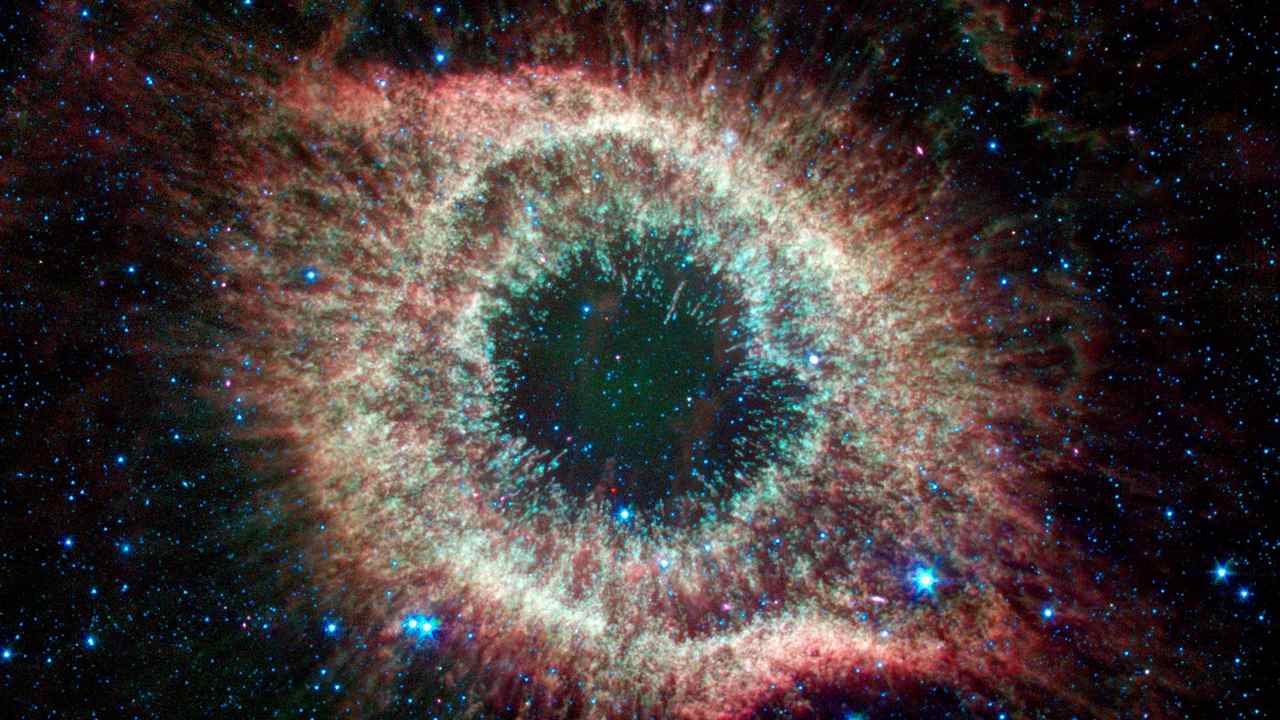 The Helix Nebula has formed in the shape of an eye and is the remnants of a sun-like star that is located 700 light-years away from Earth. When stars run out of their internal fuel supply, their outer layers puff up and that creates a nebula. Image credit: NASA/JPL[/caption] [caption id=“attachment_7238891” align=“alignnone” width=“1280”]
The Helix Nebula has formed in the shape of an eye and is the remnants of a sun-like star that is located 700 light-years away from Earth. When stars run out of their internal fuel supply, their outer layers puff up and that creates a nebula. Image credit: NASA/JPL[/caption] [caption id=“attachment_7238891” align=“alignnone” width=“1280”]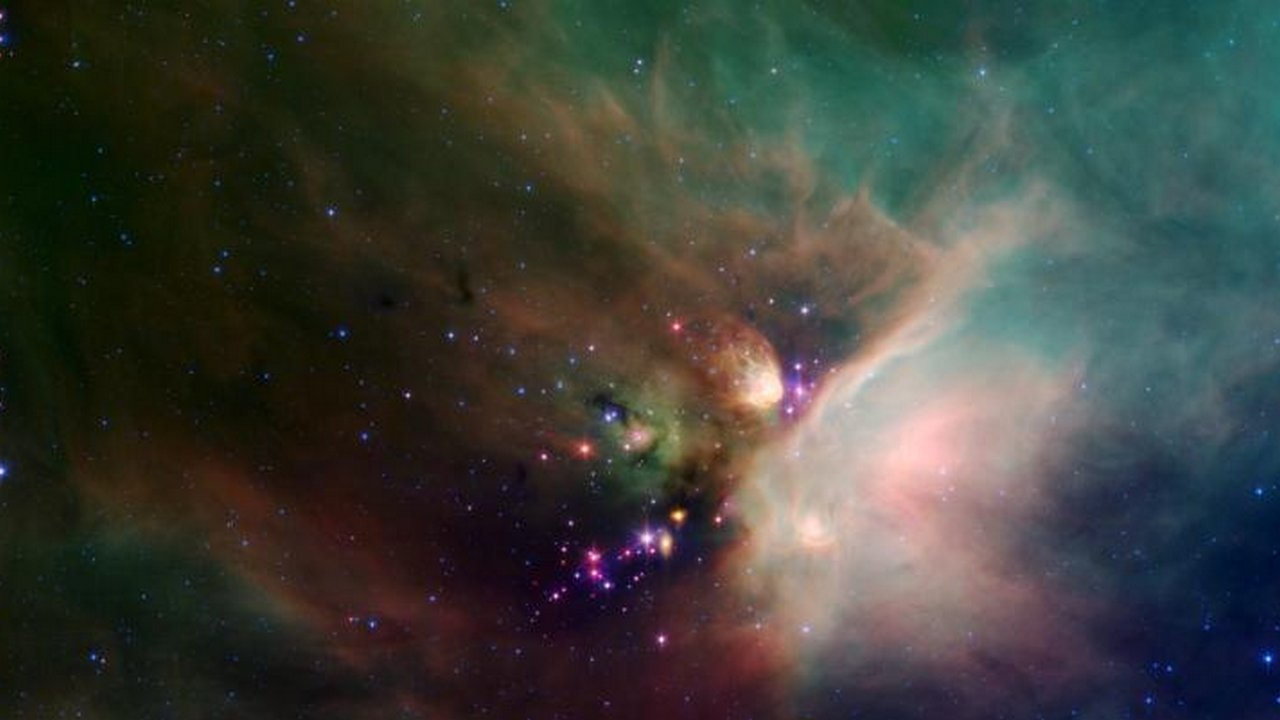 This is an image of the Rho Ophiuchi nebula which is located 400 light-years away from the Earth. One can see newborn stars peeking out from beneath the blanket of dust. This region is also one of the closest star-forming regions in the solar system. Image credit: NASA/JPL[/caption] [caption id=“attachment_7238901” align=“alignnone” width=“1280”]
This is an image of the Rho Ophiuchi nebula which is located 400 light-years away from the Earth. One can see newborn stars peeking out from beneath the blanket of dust. This region is also one of the closest star-forming regions in the solar system. Image credit: NASA/JPL[/caption] [caption id=“attachment_7238901” align=“alignnone” width=“1280”]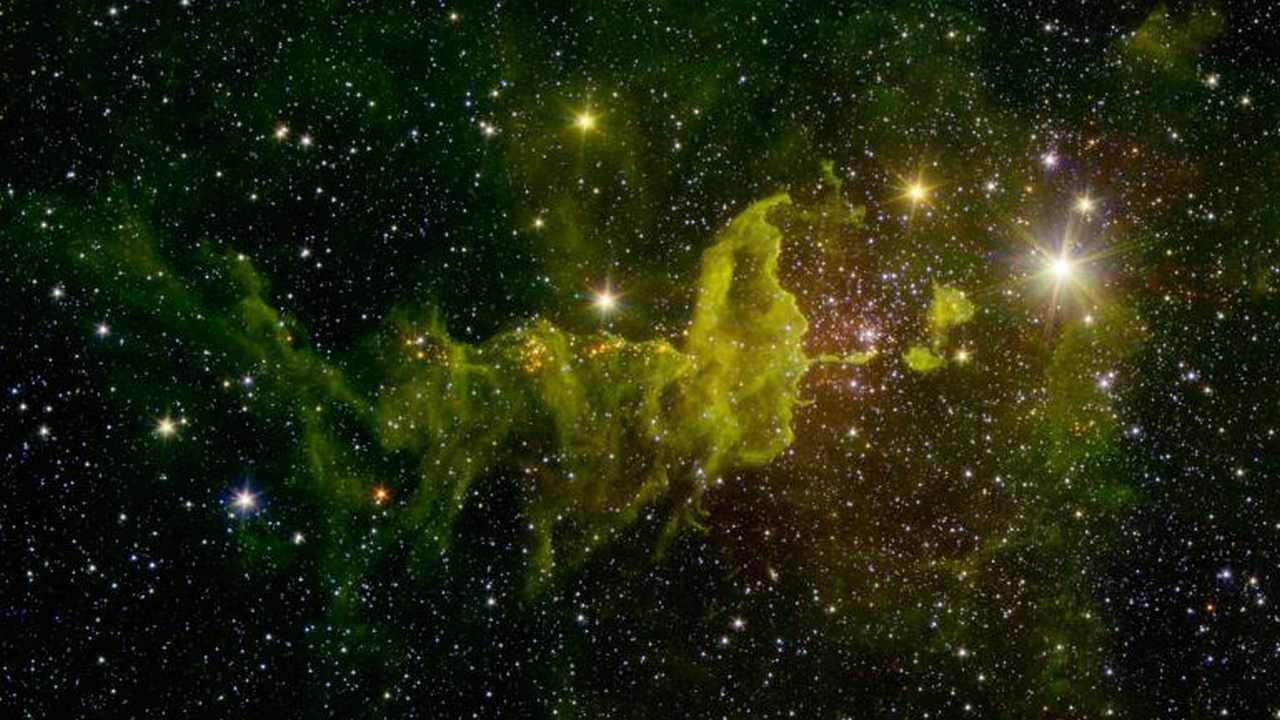 The Spider Nebula, located in the Auriga constellation, is 10,000 light-years away from the Earth. This image was formed by combining data from Spritzer and the Two Micron All-Sky Survey program. The green clouds in the image are dust clouds and indicative of star-formation in this region. Image credit: NASA/JPL[/caption] [caption id=“attachment_7238911” align=“alignnone” width=“1280”]
The Spider Nebula, located in the Auriga constellation, is 10,000 light-years away from the Earth. This image was formed by combining data from Spritzer and the Two Micron All-Sky Survey program. The green clouds in the image are dust clouds and indicative of star-formation in this region. Image credit: NASA/JPL[/caption] [caption id=“attachment_7238911” align=“alignnone” width=“1280”]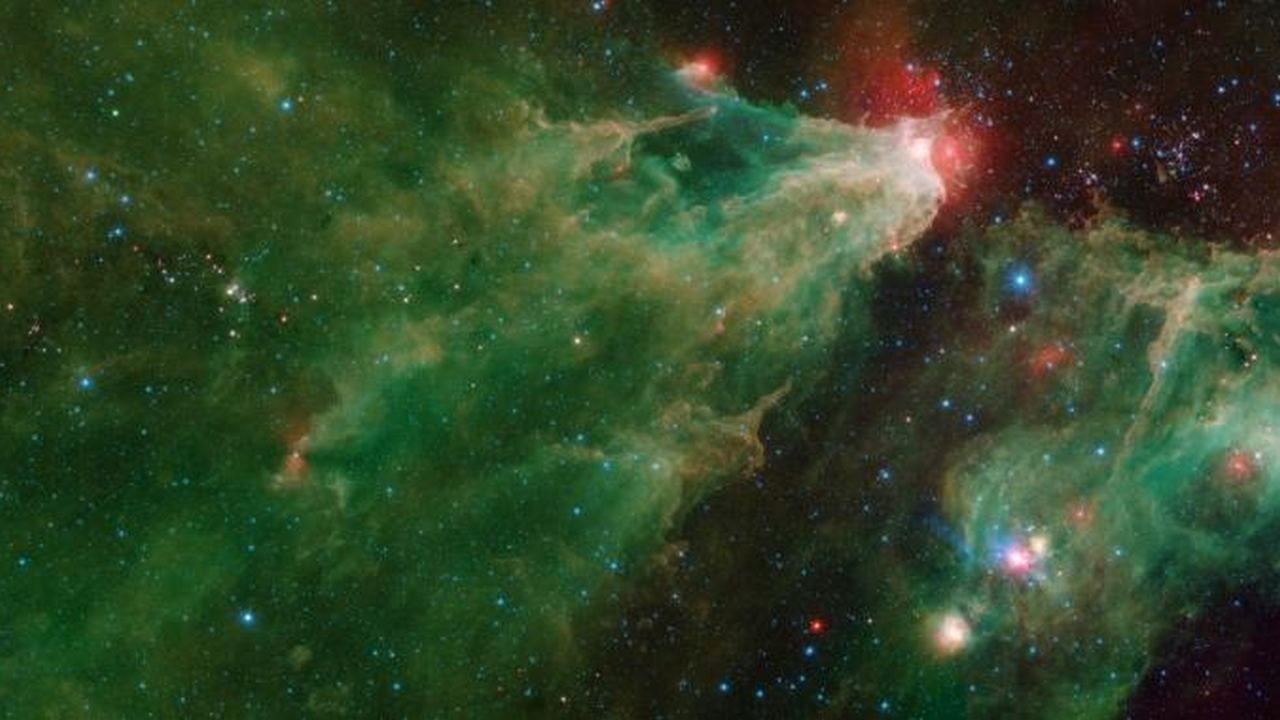 This image is a mosaic of generational stars that has been taken by the Spitzer telescope. One can see multiple star clusters that have formed at different time periods but born from the same clumps of cloud and gas. The green and orange light is a faraway nebula. Image credit: NASA/JPL[/caption] [caption id=“attachment_7239871” align=“alignnone” width=“1000”]
This image is a mosaic of generational stars that has been taken by the Spitzer telescope. One can see multiple star clusters that have formed at different time periods but born from the same clumps of cloud and gas. The green and orange light is a faraway nebula. Image credit: NASA/JPL[/caption] [caption id=“attachment_7239871” align=“alignnone” width=“1000”]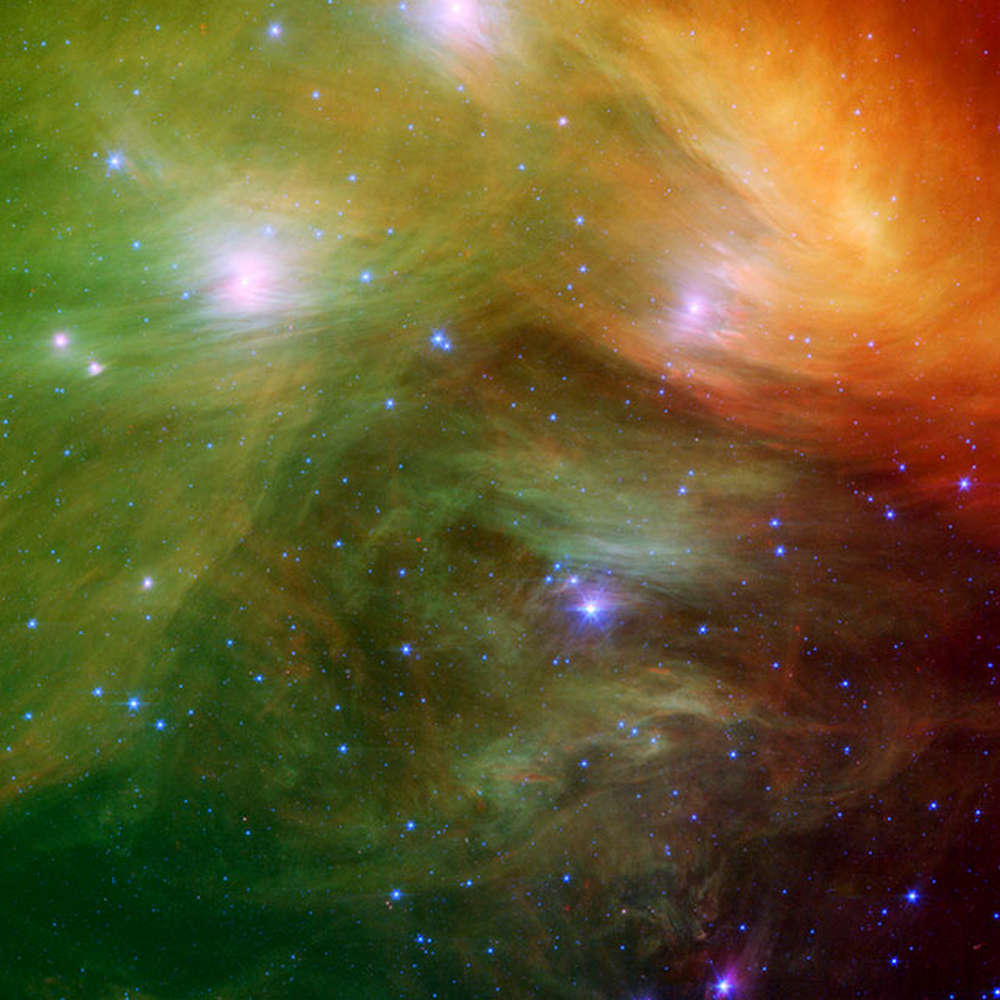 The Spitzer telescope has zoomed into the star cluster known as the Pleiades or the Seven Sisters. The densest parts of the dust clouds surrounding the stars are seen in yellow and red while the outskirts of the clouds appear in green. Image credit: NASA/JPL[/caption]
The Spitzer telescope has zoomed into the star cluster known as the Pleiades or the Seven Sisters. The densest parts of the dust clouds surrounding the stars are seen in yellow and red while the outskirts of the clouds appear in green. Image credit: NASA/JPL[/caption]
The space telescope was first launched on 25 August 2003 captures images in Infrared.
Advertisement
End of Article


)
)
)
)
)
)
)
)
)



